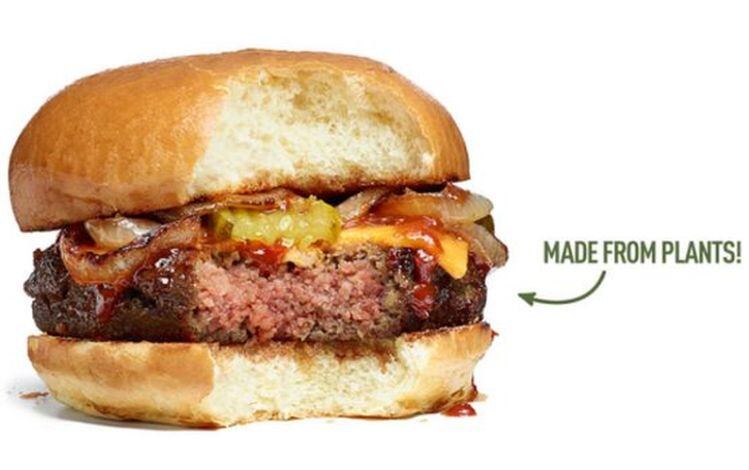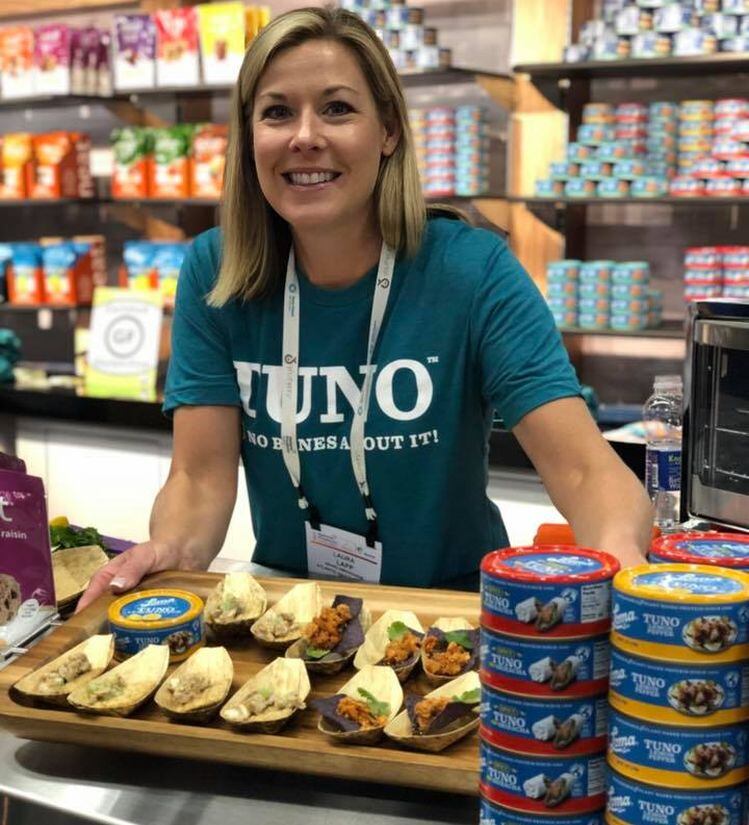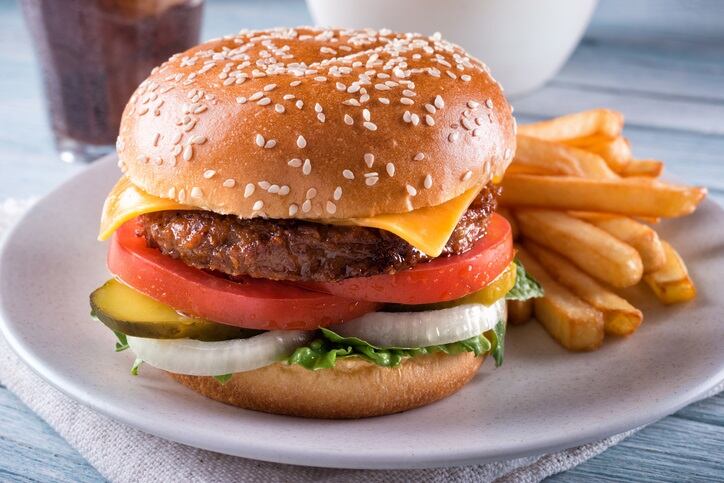In general, says Jeff Spencer, vice president, flavor creation and application at flavors and fragrances giant, Givaudan, research into beef and chicken flavors is the most advanced. However, there is now strong interest in other proteins including pork and seafood.
“The interest in pork and bacon is fairly new, and we’ve had to work very hard to come up with the tallow profiles of pork, which is where most of our research efforts have been focused lately,” Spencer told FoodNavigator-USA.
“Seafood interest is also peaking,” he said. “The challenge there is developing flavors that are truly differentiated, so you have the taste of salmon versus tuna versus shrimp, and you don’t just have a kind of ubiquitous ‘seafood’ flavor.”
Do you need heme to deliver an authentic meaty taste?
When it comes to beef burgers, a lot of attention has been focused on the use of the iron-containing molecule heme, the star ingredient in the Impossible Burger, which Impossible Foods produces via a fermentation process using genetically engineered yeast, the DNA of which has been retooled to produce leghemoglobin.
So is heme the key to an authentic meaty taste, or can you deliver this with, say, natural flavors, or yeast extract (ingredients found in most plant-based burgers these days)?
“There’s no question that heme has some catalytic properties in the formation of flavors in real animal protein,” acknowledged Spencer.
“But there are ways that you can achieve the same type of impact and characterizing flavor through traditional maillard reactions with modified reaction conditions, as well as considering the introduction of iron substrates through other mechanisms.”
Koji-fermented minerals
He added: “This is actually one of the things we’re considering with the recent acquisition of Naturex, which has a line of very interesting Koji fermented minerals [dubbed the ‘miracle mold,’ koji is a micro-organism (Aspergillus oryzae) used to ferment soybeans for making soy sauce and fermented bean paste, but is used by Naturex to produce minerals].
“One of their lines is koji fermented iron, so what we’re looking at is, is there the possibility that it could enhance flavor intensity in some meat analog applications? But that being said, we don’t find a big gap in being able to produce great flavors without it.”
So what other options are in the toolbox for creating meaty flavors in plant-based meats?
“Natural flavors tend to be fairly accepted by the consumer,” said Spencer. “Yeast extracts are also being used to simulate some of the umami character, but we’re coming up with flavor solutions that do not rely on yeast so we can have an even cleaner label. Our consumer research suggests that consumers are more accepting of natural flavors than they are of yeast extract.”

How do processing technologies deployed in plant-based meats impact flavor?
So how do processing techniques such as high moisture extrusion impact the flavor of plant proteins? And what about the new shear-cell technology developed at Wageningen University and the Technical University of Delft in the Netherlands as part of the Plant Meat Matters project?
“The processing conditions under extrusion and even with shear cell technology, are challenging for traditional flavors that are built on volatile flavor materials. You have high temperatures, high pressure, and high moisture, so you have the potential for oxidative instability and for the flavors to flash off,” said Spencer.
“So that’s a big challenge and one that we’re working on right now. What we’re trying to do is take those negative factors – heat and pressure - and use them as mechanisms to finish off flavors and have in situ flavor development by the utilization of flavor pre-cursors pre-extrusion and then using the energy present in the extrusion process to form and finish the flavor during the manufacture of the TVP.”
But why not just add the flavor at the end given how challenging the processing conditions are?
“That’s an option,” said Spencer, “But you’ve got multiple handling steps when you introduce it after the fact. It’s also a more cost effective solution if you can do it [introduce flavors] during the extrusion or in a manner where you are using a masking system during the extrusion.”
With plant-based proteins, flavor can get bound up in the material and doesn’t release properly, he said.
Givaudan’s blocker effectively goes in and "sacrifices itself" into the protein so that when you add a flavor, such as a chicken or a beef flavor, it releases in the right way, he explained.
Shear cell technology explained…
As for shear cell technology, the simplest way to understand it is that “you’re creating a lot of friction within a contained environment,” explained Spencer.
“So think about a drum dryer, like a clothes dryer, there’s a drum within a drum and there is highly packed dense protein inside, and because of the temperature and the friction, it causes the cells in the protein to denature a little bit, to thin out, and start to crosslink in a fashion that’s similar to extrusion.
“The belief is within about three years they will be able to get the technology to a point where it’s economical.”
But when it comes to taste, it’s new territory for Givaudan (the only flavor company involved in the Plant Meat Matters project), he added: “Some of the things we’re working on with this technology are when is the appropriate time to add flavor and what is the appropriate approach? Do we use flavor precursors, do we add it near completion of the process, or do we deliver it post manufacturing via a marinade?”
A batch rather than a continuous process
The goal of sheer cell technology is to create a whole muscle product, he said. “They have done a great job of creating the red meat texture, but the challenge now is to build a matrix and scaffolding system within it so you can have the proper fat distribution throughout the product as well.
“It’s extremely interesting as unlike extrusion, it’s not a continuous process. It’s a batch process, which means you could do it on a small scale, so even a local butcher could produce his own plant-based substrates to replace meat made on site.”
Intellectual property
So is Givaudan utilizing any novel or patentable processes in the production of flavors or other components targeted at the plant-based meat segment?
“We’ll treat it as a trade secret where we feel it’s a differentiating technology,” explained Spencer. “But we will sometimes file patents. For example, we have a novel blocking and masking system for the elimination of off flavors in pulse proteins.”
Fat and flavor
As for the relationship between fat and 'meaty flavors,' as companies in the cell-based meat industry are learning, much of the unique flavor and mouthfeel of meat is generated by animal fat, and finding plant-based alternatives that deliver from a taste and functionality perspective is challenging, he said.
“The challenge is getting the right flavor and melt point in a vegetable-based fat to emulate what you get with animal fat. As animal protein matures, fats will absorb a number of the flavors that are created; fats are a great repository for flavor. So we are trying to get a similar release of flavor, mouthfeel and coating, but with a lower total fat content.
“Coconut oil is used quite extensively [in plant-based meats, and features in the Beyond Burger and the Impossible Burger – where it’s the #2 ingredient after soy protein concentrate] but there’s a lot of research into fats with a higher melt point that can still deliver a great performance as the temperature drops.”
Flavor masking and new protein options in the plant-based meat arena
So what’s next in the world of plant-based meat, and do new protein sources present novel challenges from a flavor perspective?
“The newer proteins present different challenges,” said Spencer. “The soy industry has standardized but as we introduce peas and mung beans and chickpeas, some of the materials present along with the protein can have astringent, earthy, heavy vegetative notes, and we’re working from a flavor standpoint to make them more neutral.”
Ultimately of course, smarter plant breeding techniques might be able to eliminate components responsible for off notes, while a greater understanding of how processing steps impact flavor is also helping protein producers create better starting materials for plant-based meats, he said.
“We’re collaborating with many plant-based protein manufacturers to understand their entire operation and how it impacts flavor. But as those industries mature, the quality of the source material will improve.”
And for the future health of the industry, and consumers, “the future will be all about diversity,” he said.
“It’s not ideal to rely on a single protein source if you want a full nutrition value and better PDCAAS score.”
KIDS AND THE PLANT-BASED TREND:
How are parents incorporating plant-based alternatives into their children’s diets? And what are the nutritional implications? Hear from Michele DeKinder-Smith at Linkage Research & Consulting at the 2019 FoodNavigator-USA FOOD FOR KIDS summit in Chicago. November 18-20.
Checkout the latest speakers and register HERE





